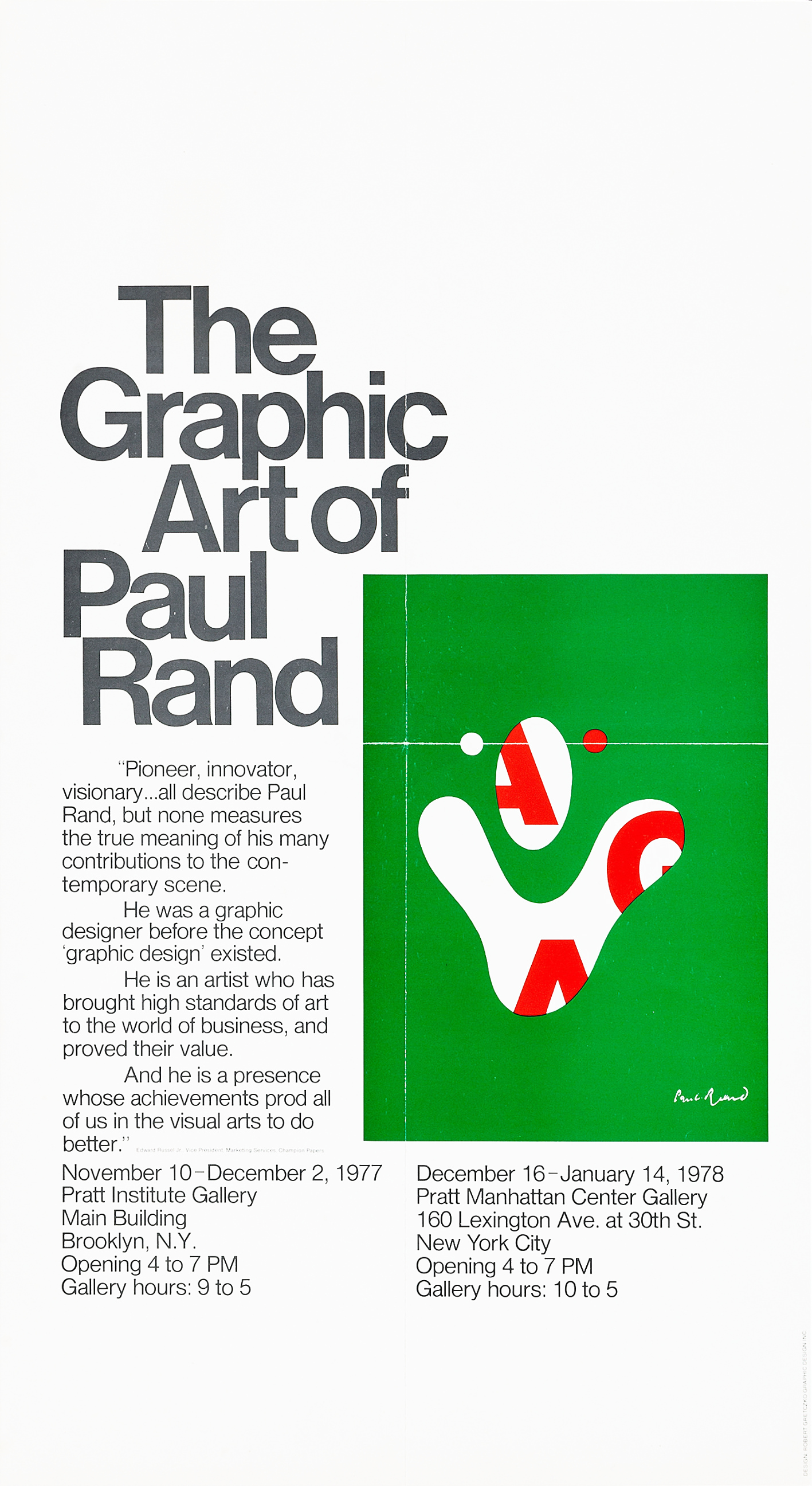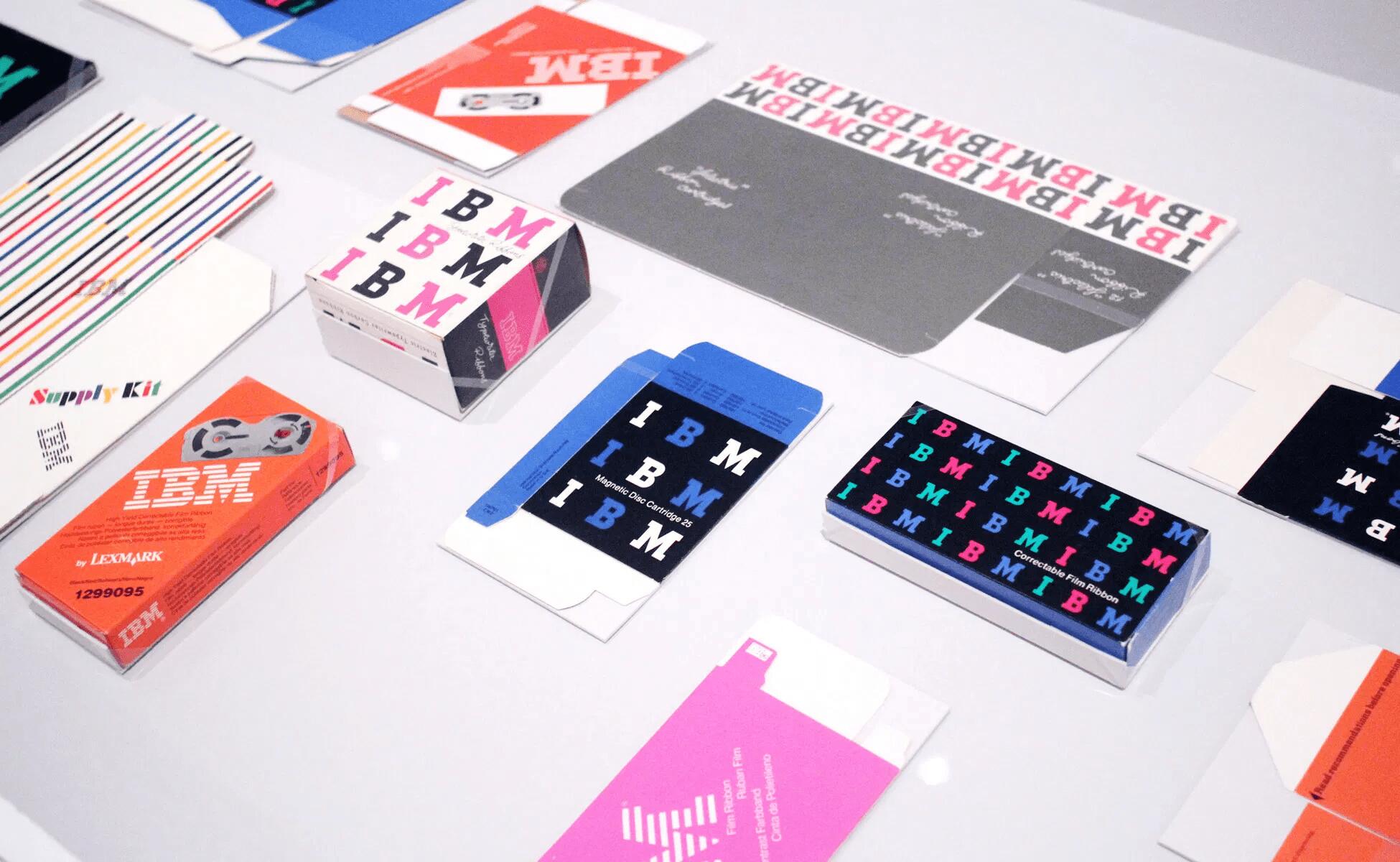Table Of Content

Famously working with IBM, he revolutionised their approach to brand, developing a bright, modern logo that could be used across all communication channels, be it print media, packaging, billboards or the side of buildings. The IBM logo told a clear story about the company and where it stood as a symbol of Post War global culture, as well as how that defined American success as a whole during this period. In an interesting way the chronology of Paul Rand’s design experience has paralleled the development of the modern design movement.
Flowers

What is not well known is the significant role he played in setting the pattern for future approaches to the advertising concept. Paul was probably the first of a long and distinguished line of art directors to work with and appreciate the unique talent of William Bernbach. IBM is the first company for which he conceives a brand identity and all visual communication campaigns. While this is only a fraction of his work, his achievements for ABC, UPS, Westinghouse, Cummins or Enron become visible and ubiquitous in the United States and abroad. They are the symbol of a post-war global culture crowning the political, military and commercial success of the United States.
Athletics devises grid-system-based visual identity for IBM TechXchange - Design Week
Athletics devises grid-system-based visual identity for IBM TechXchange.
Posted: Mon, 16 Oct 2023 07:00:00 GMT [source]
Who is the father of Graphic Design?
In 1941, at the age of 27, Rand was named chief art director of the newly-formed ad agency William H. Weintraub & Co. American advertising at the time had changed little since the late 19th Century, especially in terms of how the ads were conceived. Within the presentation Rand explained his concern that the company name sounded too close to "exit" and how he overcame that by creating a new rhythm to the name within the logo, where the copy was contained within a two-dimensional image. He did this by changing the case of the "E" to a lowercase "e" and adding a 28 degree tilt on the design. This would force the consumer to pause for thought upon reading the name, making it more memorable and enduring. To this day the company name is still referred to in copy as NeXT, showing how deeply seated Rand's design has become.
Ron Paul: Final nail in America’s coffin?
"In the exhibition we have carbon paper boxes that are pink and brown. And that gives the company a very colorful, hip appearance...All of this is meant to make the company more personable." Dr. Ron Paul is a former member of the House of Representatives. This article was written for and published by the Ron Paul Institute for Peace and Prosperity. All photos appear on this tab and here you can update the sort order of photos on memorials you manage.
Default Language
Every month, I spend hundreds of hours and thousands of dollars keeping The Marginalian going. For seventeen years, it has remained free and ad-free and alive thanks to patronage from readers. I have no staff, no interns, not even an assistant — a thoroughly one-woman labor of love that is also my life and my livelihood. If this labor makes your own life more livable in any way, please consider aiding its sustenance with a one-time or loyal donation.
One must underline that at that time, in the middle of the Cold War, abstract artists (like Pollock) were promoted by the American government via the Congress for Cultural Freedom, a propaganda organization. In contrast with the figurative communist art, the red enemy, abstract art was praised by large fortunes and institutions such as the MoMA, Rockefeller, or IBM. Because it was new and exhilarating, or simply to avoid the wrath of the government that blacklisted "communist witches" or anyone with sympathizing ideas, artists embarked on this art which also guarenteed political immunity. He not only had to create a design system for the sprawling company but also convince the designers at its many outposts to adhere to that system. He worked on packaging, on showrooms, on interiors for the company's offices. "The other thing he does is introduces all of these bright colors," Albrecht says.
Own Legendary Designer Paul Rand's Midcentury Home For $895K - Dwell
Own Legendary Designer Paul Rand's Midcentury Home For $895K.
Posted: Mon, 27 Aug 2018 07:00:00 GMT [source]
This Jacqueline Cochran ad from the early '40s shows Rand's approach to combining image and text. On that day Congress passed legislation to fund two and a half wars, hand what’s left of our privacy over to the CIA and NSA, and give the US president the power to shut down whatever part of the Internet he disagrees with. Your account has been locked for 30 minutes due to too many failed sign in attempts. Please contact Find a Grave at [email protected] if you need help resetting your password.
He radically transformed advertising, blowing away the dust of the Depression era and pioneering a new, modern approach to selling products. He helped convince some of nation's biggest corporations that good design was good business, crafting indelible logos for the likes of IBM, UPS, and ABC. It is Rand's book covers, in my opinion, that are the epitome of mid-century modern design; something I just adore. His use of flat geometric shapes, bold colors and whitespace is quintessential mid-century modern design. In these examples, each one hints at the message conveyed within the book by use of symbolism to represent the message.
Poet and businessman
Subsequently, Rand began his career as a part-time stock image creator for a syndicate. Soon his class assignments and part-time job rendered him to assemble a distinguished portfolio. His work was highly influenced by Sachplakat, the German advertising style and Gustav Jensen’s works. During this time he also decided to cloak his Jewish origin by shortening and modernizing his name Peretz Rosenbaum as Paul Rand. The decision worked in his best interest as he became the most enduring brand name for graphic designing. Shortly after, he became a success story and during his twenties his graphic work earned international recognition.
At the age of 82, Paul Rand died of cancer in 1996 and was interred at Beth El Cemetery. For me, personally, I am drawn to the magazine covers Rand produced in his early career, working for Esquire and Direction magazine from the late 1930s - 40s. During this wartime period Rand was starting out his approach to graphic design, using Swiss Style and mathematical grid formats in order to produce Le Corbusier type designs to put his message across clearly. In this example of a Christmas cover for Direction magazine in December 1940, Rand produced a Christmas present-type design, but rather than ribbon he substituted barbed wire, with red dots suggesting blood splatters, in order to convey the horror of war at that time.
These influences reflected in his work, which variously used---and often combined---collage, montage, hand-lettering, drawing and photography to bracing effect. Moreover, Rand’s graphic genius is also evident from his collaboration with the technology giant, Steve Jobs, on the NeXT Computer corporate identity project. The logo containing a simple two-dimensional black box presenting the four-letter company’s name manifested a visual harmony. Steve Jobs admired Rand’s graphic creativity and called him “the greatest living graphic designer.” Besides art direction, he taught at Yale University, as a Professor of Graphic Design. Additionally, he wrote several crucial works on design such as Design, Form and Chaos, Thoughts on Design and Design and the Play Instinct. In his final years he recorded his memoirs and focused on designing.
Paul Rand was one of the twentieth century's most influential graphic designers. Born in New York City, Rand was educated at Pratt Institute, Parsons School of Design, and the Art Students League, where he worked with George Grosz. From 1936 to 1941 he served as the art editor of Esquire magazine, and he taught at the Advertising Guild, Pratt, Cooper Union, and Yale University, where he was a professor emeritus of graphic design. He has received awards from the American Institute of Graphic Arts and the Art Directors Club of New York and was given an honorary doctorate by the Philadelphia College of Art. An American designer whose life, although tragically brief, left an indelible mark on the history of graphic design was Alvin Lustig (1915–1955). He started out with the desire to be an architect and studied with Frank Lloyd Wright.
He was an art director at the New York Times, where he now writes the Visuals column, and currently serves as co-chair of the MFA Design Department at the School of Visual Arts in New York. All images are copyrighted and strictly for educational and viewing purposes. Rand thought the striped IBM logotype gave the name visual rhythm and a less monolithic appearance.

No comments:
Post a Comment